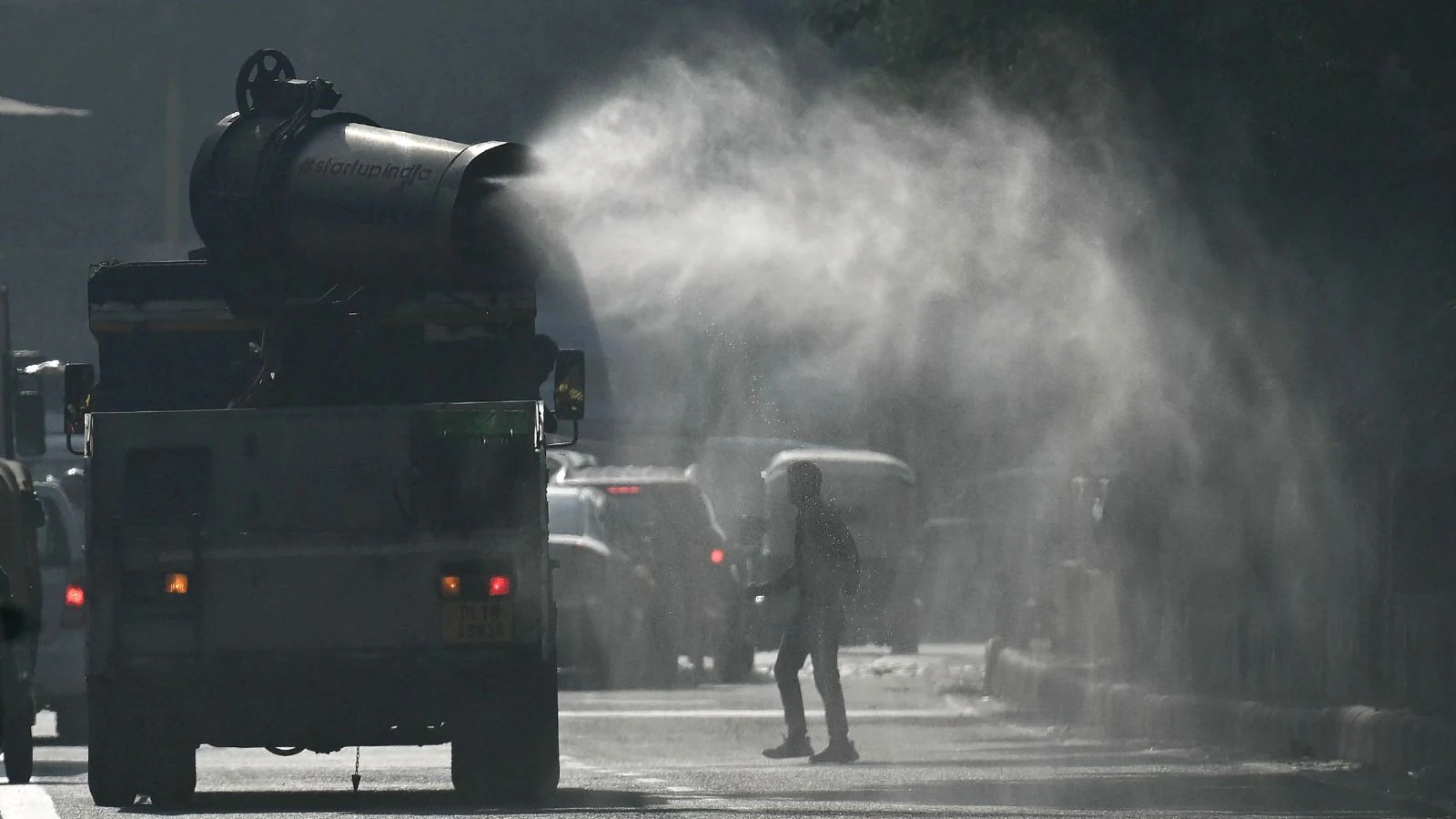Copyright news18

The prime-time debate on national TV that runs each time on Diwali no longer argues a moot question. The fact that high air quality has its impact on all sectors of the economy and all aspects of human health is well established. The discussion should be one of short, medium, and long-term solutions to be able to tackle the menace which every country has struggled with, but which every country has also tried to solve in a way that works for them. This Diwali once again reminded us how deeply air pollution affects public health in India. In Delhi-NCR, pollution levels spiked sharply in the days following the festival, with PM concentrations rising more than threefold compared to pre-Diwali levels. Even if the spike is temporary, hospitals across the region are reporting a surge in admissions for respiratory distress, asthma, and cardiac complications – a grim annual trend that underscores the real cost of polluted air. Permitting green crackers led to the highest concentration of PM2.5 and the highest mean of PM2.5 on Diwali night as compared to the last five years. Even if crackers are a one-time affair on Diwali, the load it adds on baseload levels disrupts the thin balance which Delhi’s air hangs on. Against this backdrop, a new Health Benefit Assessment Dashboard, developed by Climate Trends in collaboration with IIT-Delhi, provides timely insight into just how damaging prolonged exposure to polluted air can be. The tool quantifies the health burden of air pollution, showing in scientific terms how clean air directly translates into fewer diseases, especially among women and children. When India launched the National Clean Air Programme (NCAP) in 2019, it was largely seen as an environmental intervention, aimed at reducing PM2.5 and PM10 levels by 20–30 per cent by 2024, using 2017 as the baseline year. But emerging evidence shows that this programme’s benefits extend well beyond cleaner skies; it’s contributing to a stronger foundation for public health and well-being. The Dashboard we have developed shows with scientific clarity how meeting NCAP targets could substantially reduce disease prevalence and makes a connection between cleaner air and healthier citizens, reminding us that air quality policy is, at its heart, a public health policy. Drawing on National Family Health Survey-5 data across 641 districts, the dashboard links long-term exposure to PM2.5 with diseases such as diabetes, hypertension, COPD, heart disease, and anaemia in women, and with lower respiratory infections (LRI), low birth weight (LBW), and anaemia in children. During the NFHS-5 survey period between 2019 and 2021, India’s average PM2.5 concentration stood at an alarming 59.6 µg/m³. A 30 per cent reduction under NCAP would bring this down to 41.7 µg/m³, still above safe global limits but with significant health dividends. The science behind these associations is now well established. Fine particulate matter, or PM2.5, is so small that it penetrates deep into the lungs and even crosses into the bloodstream. Once in circulation, it triggers systemic inflammation, oxidative stress, and disturbances in the body’s immune response. These processes damage blood vessels and impair the function of vital organs. That is why long-term exposure is linked not only to respiratory problems but also to cardiovascular diseases such as hypertension and heart disease. Similarly, air pollution affects insulin resistance, explaining the rise in diabetes risk among exposed populations. For women, chronic exposure during reproductive years weakens oxygen delivery, increasing the likelihood of anaemia. For children, whose organs and immune systems are still developing, the risks are magnified: inhaled pollutants inflame the airways, leading to recurrent respiratory infections, while exposure during pregnancy increases the chances of low birth weight and impaired growth. Against this scientific backdrop, the findings become even more urgent. Diabetes prevalence among women of reproductive age could decline from 1.7 per cent to 1.4 per cent nationwide, with Delhi, Uttar Pradesh, Bihar, Assam, and Haryana recording the sharpest reductions. Hypertension prevalence could fall by up to 8 per cent, particularly in Punjab, Haryana, and Delhi, while COPD and heart disease cases would also see meaningful declines of up to 12 and 10 per cent respectively. Even anaemia, often seen only as a nutritional challenge, shows reductions of 3–8 per cent linked to cleaner air, with the biggest gains in states such as Assam, Bihar, and Jharkhand. Importantly, even relatively urbanised union territories like Chandigarh, Goa, and Puducherry demonstrate measurable benefits, underlining that air quality improvement is not just a northern or Indo-Gangetic plain issue but a nationwide health investment. The story is equally urgent for children. Our analysis highlights how cleaner air could reduce lower respiratory infections, low birth weight, and anaemia—conditions that have life-long implications for child survival and development. In Delhi and Bihar, for example, LRI prevalence drops by half a percentage point when NCAP targets are met, while the burden of LBW falls in states such as Uttar Pradesh, Assam, and Punjab. The reductions in childhood anaemia are perhaps the most dramatic, with states like Bihar, Jharkhand, and West Bengal showing declines of three to four percentage points, translating into millions of healthier children. These improvements are not confined to high-burden states alone; southern states like Kerala and Karnataka, and smaller territories like Goa and Puducherry, also experience measurable gains. What emerges from this evidence is that air pollution is not merely an environmental concern but a fundamental determinant of health equity. The Indo-Gangetic Plain and eastern states, where dense populations coincide with some of the highest levels of air pollution, stand to gain the most from clean air interventions. But even outside these regions, the benefits are visible. The logic is simple: every microgram reduction in PM2.5 translates into fewer cases of chronic and acute disease, fewer hospital visits, and better health outcomes for women and children across India. This should sharpen the urgency of NCAP 2.0 implementation and of determining clean air as a key component of developmental priority. Clean air is not just about reducing smog or improving visibility; it is preventive healthcare at scale. Unlike hospital-based interventions that treat disease after onset, reducing air pollution prevents disease before it begins. In a country where the health system is overstretched and preventive care is often underfunded, such co-benefits are invaluable. As India reviews NCAP’s progress, regulators must recognise that enforcing air quality targets is not only an environmental obligation but also a health imperative. Strengthening monitoring networks, ensuring accountability at the state level, and integrating clean air strategies into public health planning are urgent steps. The point is simple: “clean air is the path to a healthier India”. Views expressed in the above piece are personal and solely those of the writers. They do not necessarily reflect News18’s views.



